Marriage is one of the most significant commitments that we may make in our lives. It is entirely natural to want this commitment to be marked in a sacred way, even if we don’t think of ourselves as ‘especially religious’.
Handfasting is the traditional Pagan term for a Blessing of Marriage, dating back to ancient times. To handfast is to form an equal partnership, tied together by the bonds of emotion and love. Handfasting is a shared relationship, not a matter of possession. The rites of handfasting are centred on the couple involved – the celebrant is there as a facilitator of Blessings, not to give permission.
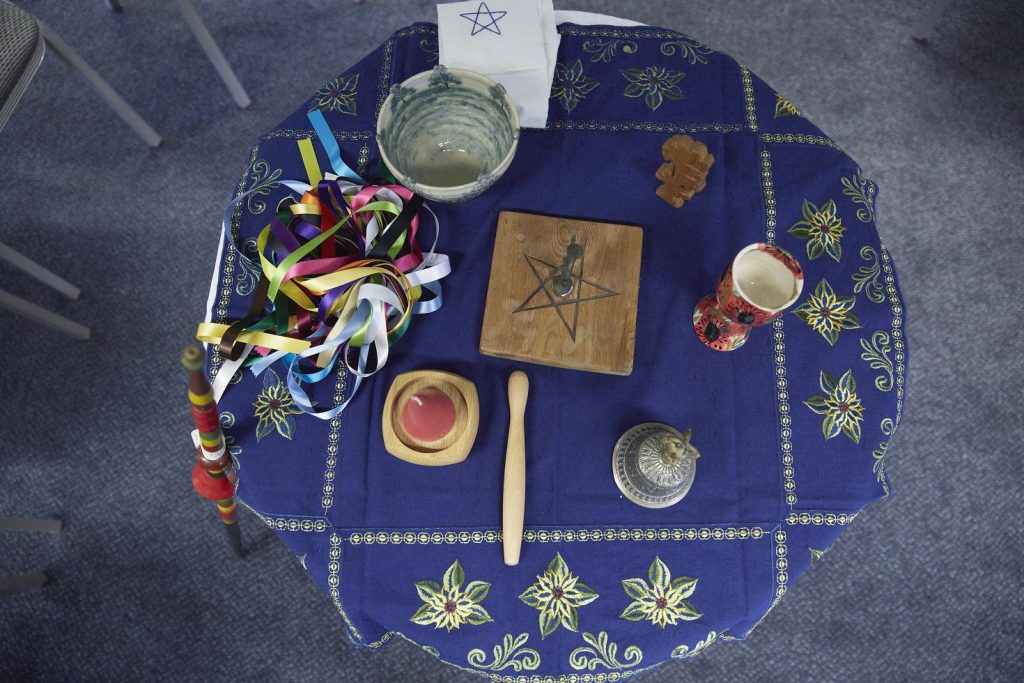
Handfasting is for any couple wishing to make public commitment in their relationship, with full equality for all LGBTI people. Pagans have supported LGBTI couples from long before these marriages were recognised legally.
The procedure is a little different from standard weddings. Each ceremony is unique, specific to the couple, and at least in part designed and written by them. We like to meet with the couple well in advance so as to plan the day to individual wishes.
We are likely to be arranged in a Circle, not in rows. Some of what usually happens at a reception (such as speeches and toast) can often be incorporated into the religious ceremony. This does mean that the handfasting may be of longer duration than a standard ceremony, expect at least an hour or a little more.
Legal Issues
Within the legal jurisdiction of ‘England and Wales’ handfasting is not recognized as a legally valid marriage. The problem is not that there is an explicit prejudice against Paganism, rather that the current state of the law is utterly unhelpful. The Church of England (and Church in Wales) have special privileges, laws unto themselves indeed. Otherwise, within England and Wales, a legal marriage must take place in a building licensed and registered with the local authority for that purpose. Likewise for public religious events. Further complication is that a civil ceremony, conducted by a registrar, must not have any religious content at all. It is perfectly possible for a Pagan organization to establish suitable premises and go through the necessary registration, and then further to have a religious practitioner, priest, priestess, licensed to perform marriage there as a single ceremony, much as can happen in many chapels. But at the time of writing, the only group to have done this is the Glastonbury Goddess Temple. It has been recognized by the Law Commission that Marriage Law in England and Wales is outdated and problematic, for the public in general, and for various religious groups, not just for Pagans. However, in the current tangle of legal change caused by exit from the European Union, it is likely to be some years before change happens. The law in Scotland is much more sensible. (You can travel there for your wedding, see this document for details: http://www.scottishpf.org/RME_Lesson_6_Pagan_Marriage_Ceremonies.pdf)
In practice then, in order to have your Pagan marriage recognized by the the state as legally valid, you need also to have a standard civil ceremony. This can be at its most minimal, with just the two witnesses. Most opt to do this before the handfasting, not necessarily on the same day. We will gladly provide the necessary legal witnesses if you wish. You can have the civil ceremony at the same licensed venue as the handfasting, provided that the ceremonies are quite separate, so that the registrars leave before handfasting begins. Although your legal marriage has to be indoors, at the approved location, the handfasting could then be outdoors. You may of course prefer to keep the civil-legal procedures separate from your spiritual commitment to one another.
You are welcome to celebrate a handfasting without having legally-binding married status. It may also possible to celebrate a handfasting when legal requirements for marriage cannot be met.
The Venue
Your choice of marriage venue is of great importance to you. It’s your day and your choice! Many Pagans (and other folk too) like the idea of being handfasted out of doors, be this at their favourite stone circle, on the beach, or simply in a garden. This has wonderful potential but please do consider (a) the weather, which can’t be guaranteed clement and (b) the mobility of your guests – older folk especially don’t always take to long cross-country walks, and may well want to sit down for anything but the briefest of ceremony. You might also consider the hard of hearing – it’s important for your guests to hear your vows. In both indoor and outdoor venues some sort of microphone and pa system can be a great help if technically possible.
The Ceremony
In a handfasting, you can have pretty much any sort of ceremony you choose. Some couples have a very clear idea of what they want in their ceremony, and for you we are very happy to bring that to completion. A major consideration is that of who you want as your guests. If all your guests are actively committed to some form of Pagan spirituality, the rite can be complex, esoteric, as dramatic as you choose.
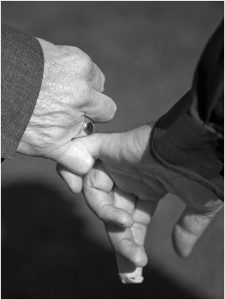
Other couples aren’t quite so sure as to detail, and also want to be able to include friends and family who aren’t Pagan at all, might indeed have not much idea about Paganism. Many want to be able to include family members and friends with limited mobility.
Handfasting is for everyone wanting their wedding to be a special and blessed event.
Our usual style of ceremony is intended to be inclusive of all. A basic difference from other religions and standard civil ceremonies is to involve family and friends actively in the rite. We recommend the following basic three-part sequence, the details of which you can write, in part, or completely, for yourselves if you wish.
- Firstly, after welcome and introduction, family members are invited to make their blessing for this new stage in the life of the couple – partly in their own words (with recollections and jokes etc) and partly in more formal terms. For young couples, this usually involves parents – something combining ‘giving-away’ with the “parents’ speech”. Where either party has children from prior relationship, of any age, and of course if the couple have children together, we very much encourage the children to be actively involved.
-
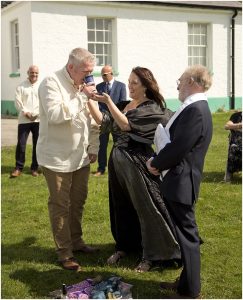
Sharing the Mead-cup The second phase of the ceremony, the heart of it all, is the exchange of vows between the couple. The pledging is usually made after drinking from the ‘mead-cup’ (alcoholic content optional – sharing water is just as meaningful). Often, the couple write vows for themselves – or we can help the tongue-tied. We suggest that then these vows also include the usual requirements for legal recognition. Rings can be exchanged at this point – or blessed if already fitted.
- The third part of the rite is the binding of hands and the blessing by friends, including at this point (and as appropriate for the couple
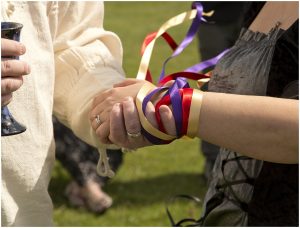
Tying the Ribbons concerned) the groom’s man and bride’s lady guests. The celebrant ties the couple’s hands with ribbons (colours of your own choice if you so wish), followed similarly by two ‘best friends’, who speak both in their own words and with formal blessing, then more as you choose. The blessing ribbons can be transferred to a broomstick for permanent retention, and of course, the couple can jump over it all! Ribbons can also be attached to something smaller for permanent retention – a Welsh lovespoon is ideal.
Gallery and Testimonials
Tracey and Sue
Tracey and Sue held their legal ceremony and reception at a hotel in Pontypool. With much enterprise and logistical expertise, they arranged the handfasting to take place in the Shell Grotto at Pontypool Park.
Tracey writes:
Our wedding date was set, the venue booked & guests invited. We had given ourselves one whole year to plan it. As part of our special day, we also wanted a handfasting after the “legal bit”. One of us is Pagan, the other is not so it was important that the ceremony be conducted in a way that pleased us both. We approached Rufus and explained our wishes to which he replied, no problem! We were invited to Rufus’ home and sat with him to discuss the ceremony we envisioned. Rufus took all our ideas, wishes and expectations and produced a beautiful, bespoke script for the ceremony that spoke of our love for each other, involved our children, families and ancestors. We were guided and inspired by Rufus through each planning stage of the ceremony, given choices and alternatives which suited us both. Rufus made original and exciting suggestions we hadn’t even thought of which we were delighted to want to include.
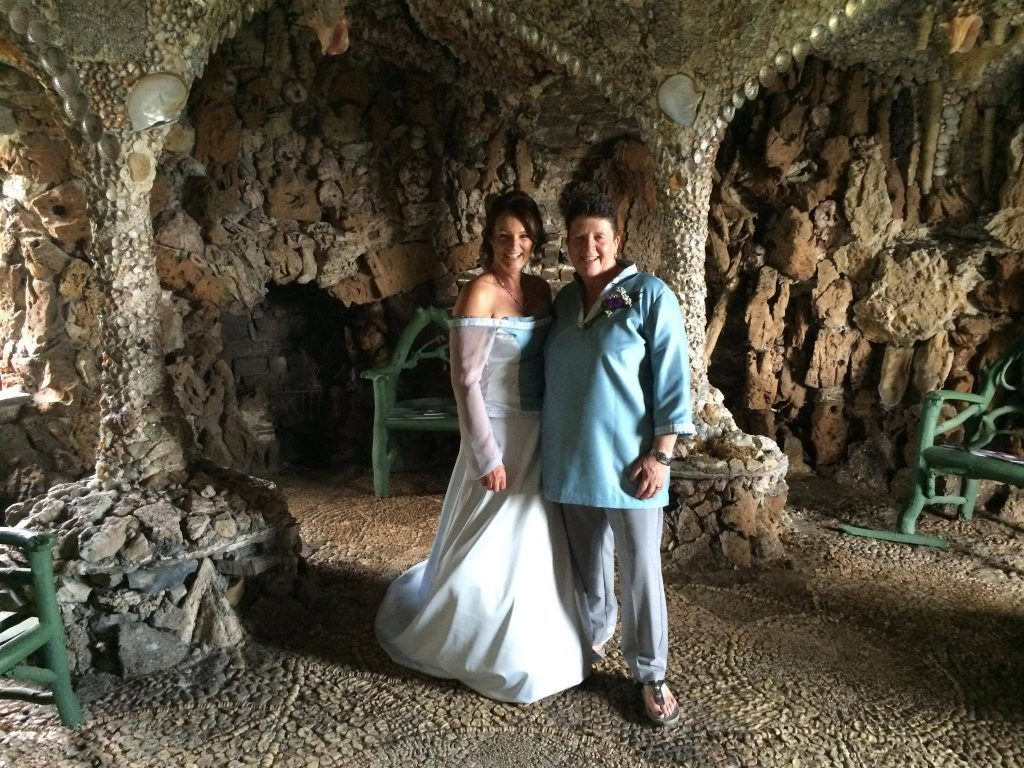
On the day, Rufus took gentle control of everything & everyone, confidently guiding our families and ourselves through every stage of the carefully planned handfasting ceremony. It was beautiful, original, magical and made us all cry with happy emotions. We ended the ceremony by jumping over a decorated besom and the photographer caught the shot beautifully. The happiness and joy on our faces showed the depth of our feelings as we emerged newly handfasted to begin our married lives together.
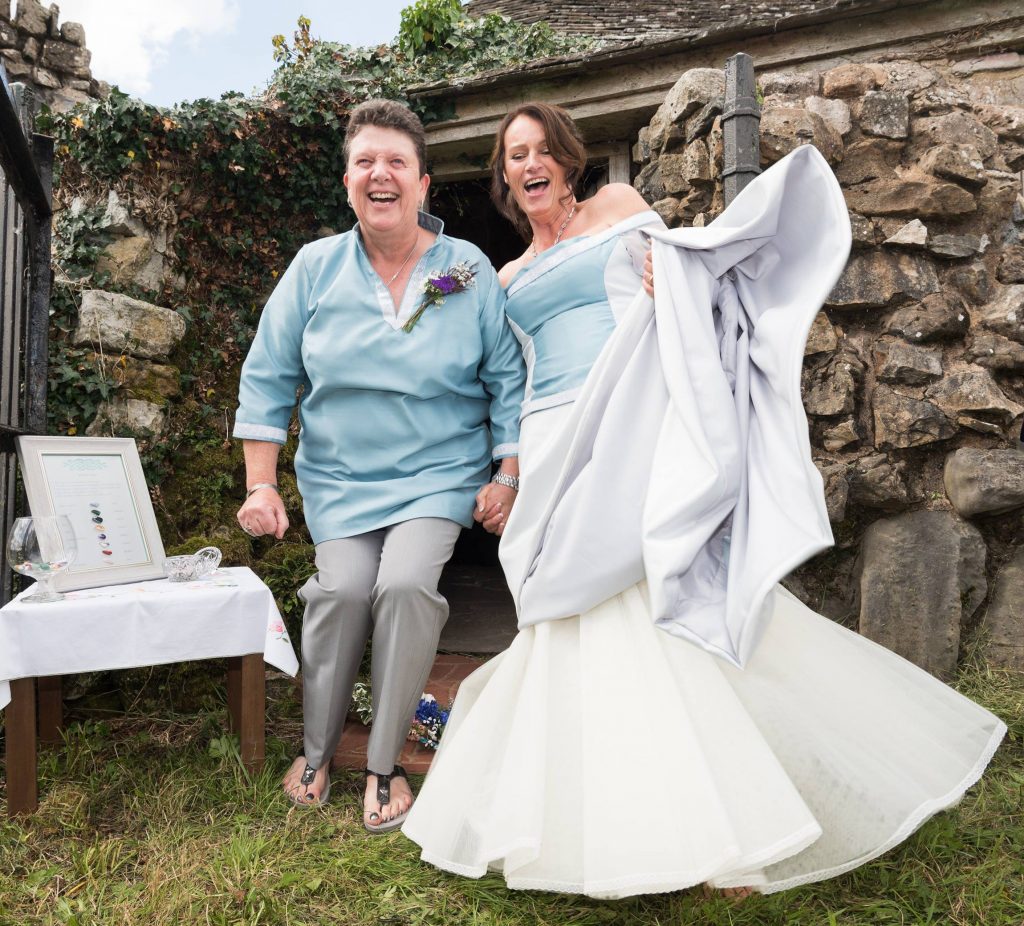
(On the table there is a Blessing Jar – guests selected a crystal to add to this as blessings to keep.
Rufus made our dreams come true. We placed our hopes, dreams and trust for this important part of our day in Rufus’ hands. He brought to life a script of meaning, joy & celebration that we had all planned together. No part of it went wrong or didn’t work. Our families were delighted to have been part of our unique and special ceremony and we had the most wonderful feedback from them …
“I wasn’t sure what to expect but it was beautiful, I loved it”
“I was nervous about my speaking part but it felt so natural and I’m proud to have been part of it”
“At first, I thought it was a bonkers idea but I enjoyed it more than the legal ceremony”
“It felt more personal and heartfelt than anything I’ve ever seen before”
“I was so touched by the words I couldn’t hold back my tears of happiness”
“I’d heard of handfastings but never seen one, I’m so pleased to have witnessed yours, it was the most beautiful experience”
Thank you Rufus for making this happen for us, we are blessed to know you.
Angharad and Paul
Angharad and Paul chose the Nash Point Lighthouse for their legal ceremony. The indoor venue can only accommodate a select few guests, and has many stairs to climb. Their handfasting was celebrated on the clifftop grass outside the lighthouse, with chairs for the mobility-impaired. The sun shone kindly but it’s always windy there! Altar cloths need rocks to prevent them from being blown across to Somerset.
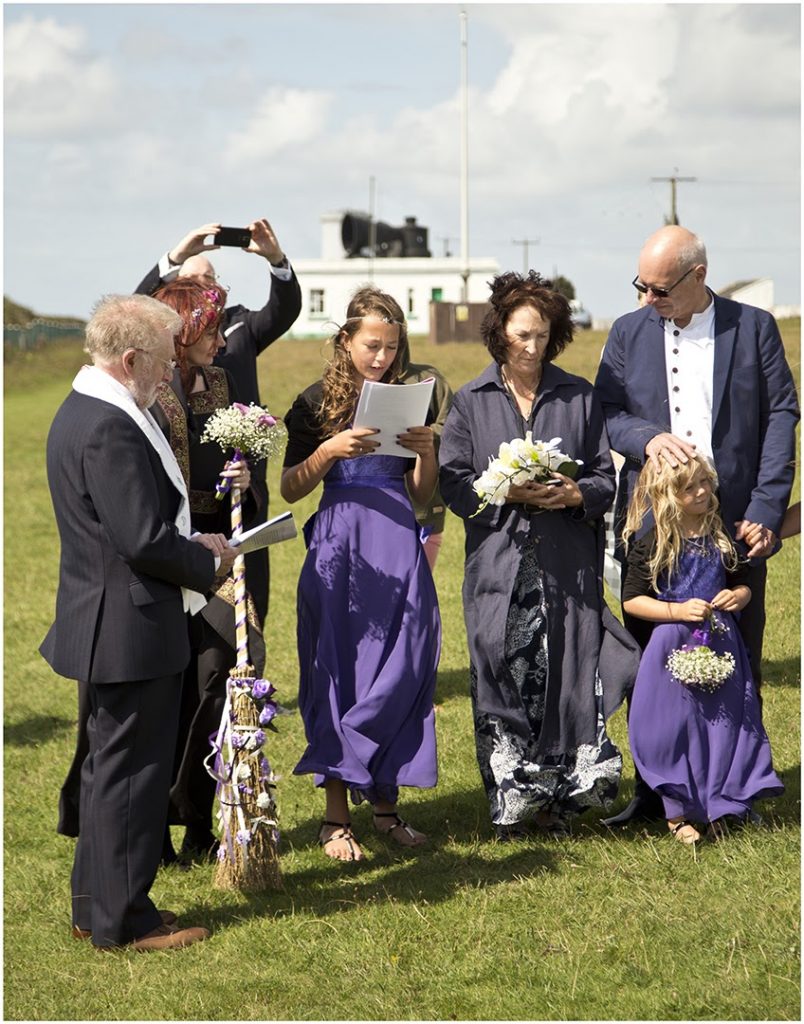
Angharad writes:
Rufus is a charming and charismatic individual who makes you feel at ease with any path ahead.
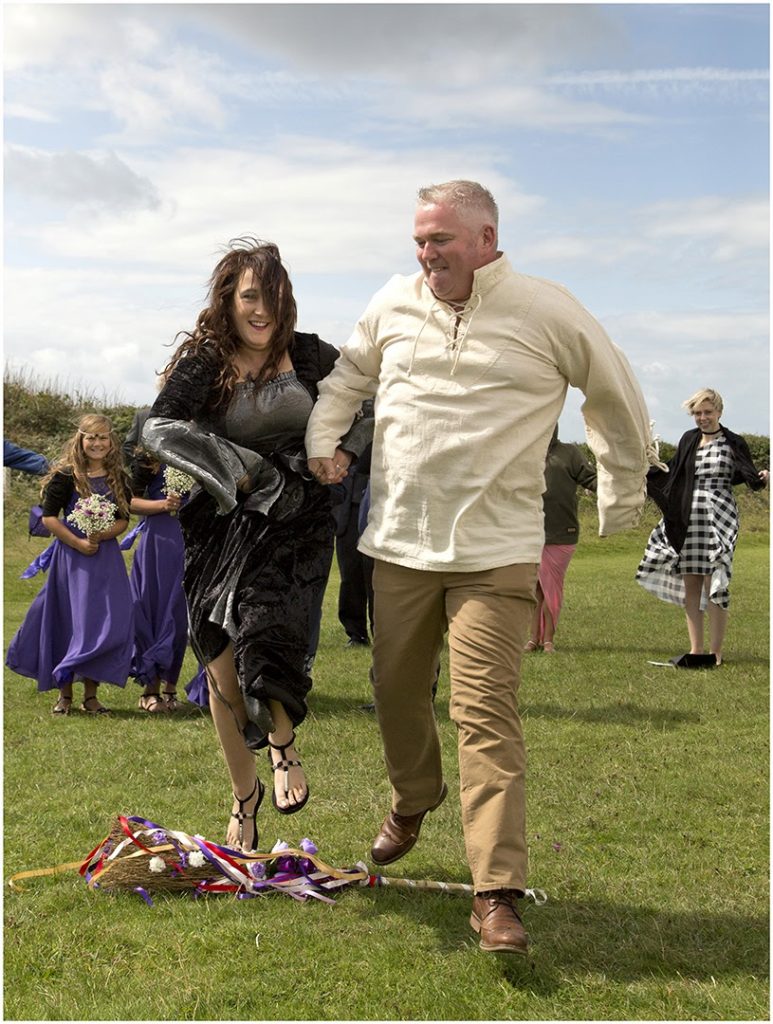
Charis and Tom
Charis and Tom had their legal ceremony at the the register office in Llanelli, followed by handfasting and reception at Trinity College, Carmarthen.
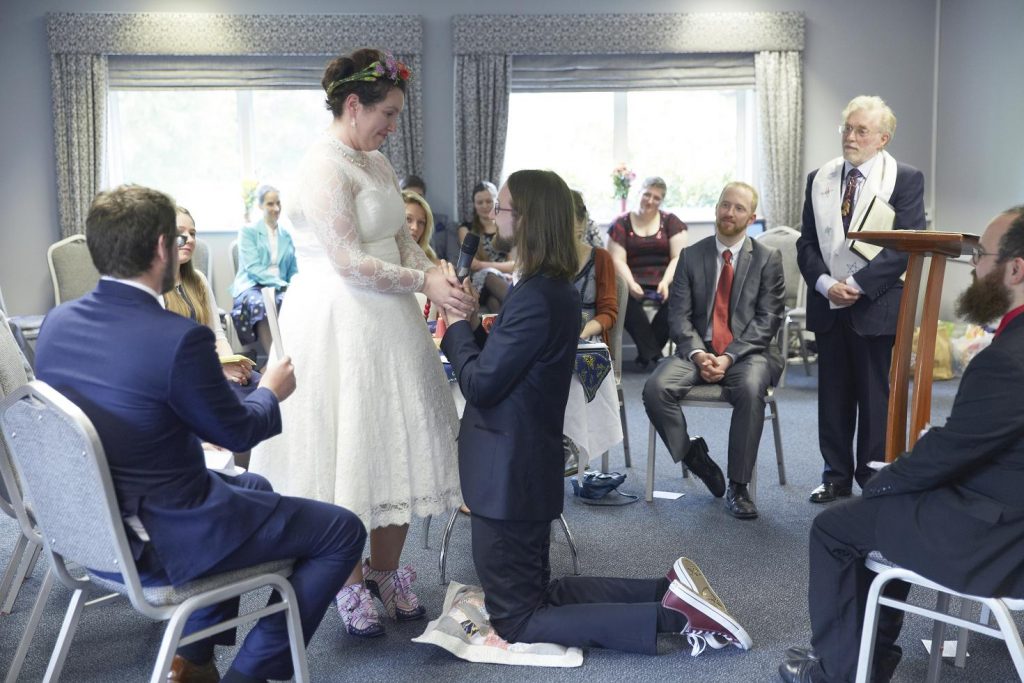
The day was very wet so we were all grateful for being indoors!
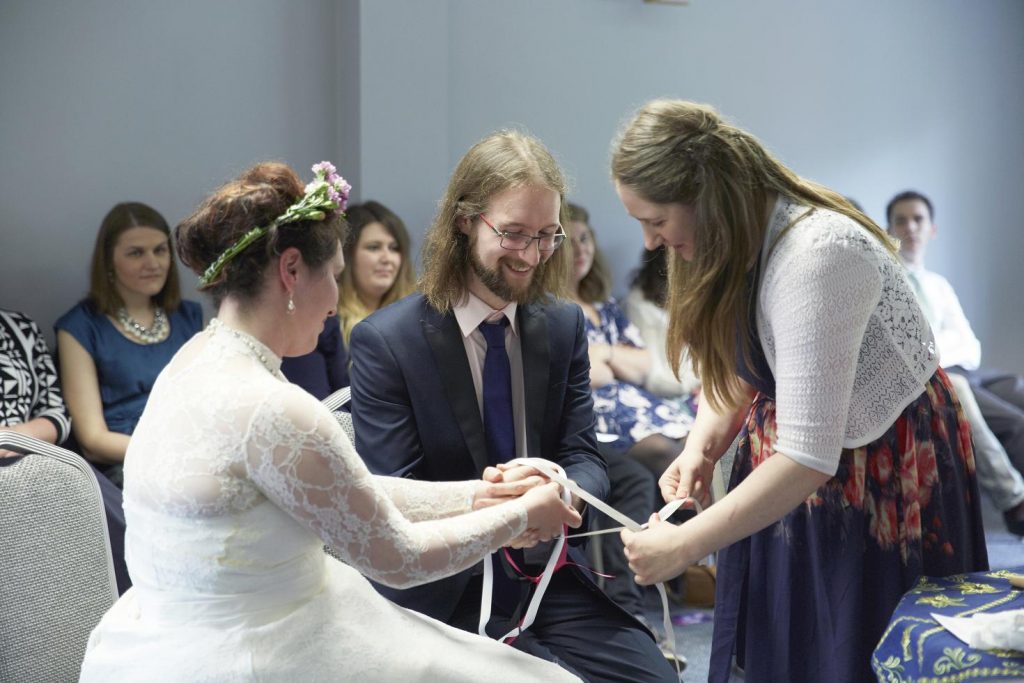
Stefan and Nattaya
Stefan and Nattaya celebrated an interfaith wedding at the Wat Mahathat temple, Abbots Bromley. A traditional Thai Buddhist ceremony was held first, followed by the handfasting.
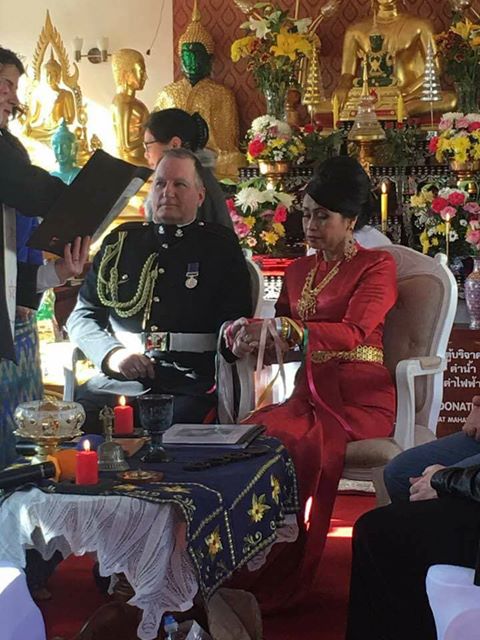
Stefan writes:
Thank you Rufus for giving such a lovely blessing. Everyone is talking about how lovely it was and how surprised they are to be honest. Natty is over the moon and I’m glad that you were the one to bring us together.
Dancing
People like to dance at weddings!
We may be able to help you further with this:
If you wish, we can include a traditional wedding-blessing dance as part of the main rite, usually just before the conclusion. We find this dance is easy enough for everyone with mobility to learn quickly and enjoy.
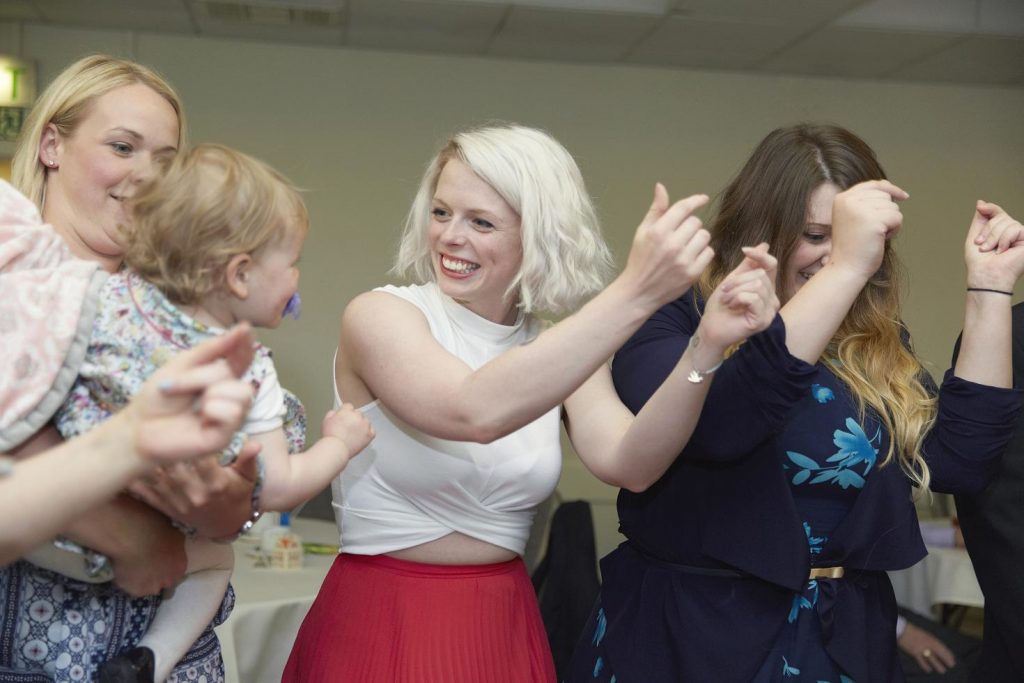
A ‘twmpath’ or ‘ceilidh dance’ is often included in Welsh wedding parties. Rufus is a teacher of European traditional dance, and can ‘call’ for this, as well as helping to arrange musicians.
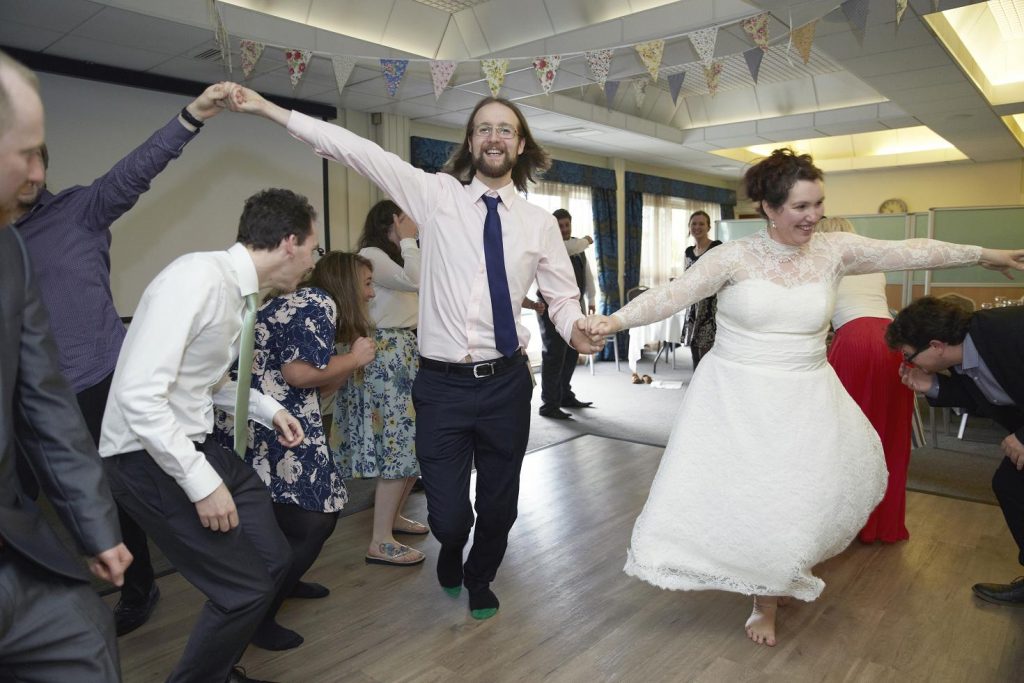
If the couple want to do a ‘ballroom-style’ first dance with, but don’t really know how to do more than shuffle, Rufus can also provide a bit of tuition for this.